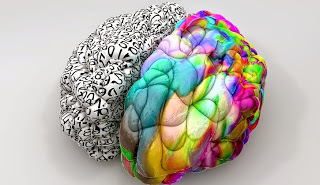Pearl Zhu's Blog, page 1435
May 24, 2015
What are Tactics and Methodologies in Developing IT and Business Relationship?
 Both the senior leadership team and the CIO are clear in what needs to achieve in terms of top line, bottom line and working in tandem with other departments to achieve IT goal. So what are the tactics and methodologies in developing IT & business partner relationship?
Both the senior leadership team and the CIO are clear in what needs to achieve in terms of top line, bottom line and working in tandem with other departments to achieve IT goal. So what are the tactics and methodologies in developing IT & business partner relationship?
IT oversights business processes, and it also plays pivotal role in digitalizing key business processes. In the process the need to align all the departments is not lost sight of, but the next big thing is how to sustain and grow as well as keep the momentum going. The challenge should be met comfortably by identifying areas that need improvement, looking for new avenues of revenue, better practice etc. The team having tasted success does not want to rest on its laurels. They aimed big.
IT leaders need to have mind shifted from IT as a cost center to value creator: They have to develop a good understanding of the business, the marketing mix and its financials, and how past and current decisions have impacted the business. So when leadership team sitz to discuss about business strategy in business term, you are not lagging behind and you can make good contribution to the matter at hand, also provides vision on how IT can catalyze business growth. Secondly, do a thorough analysis of IT activities, programs and policies in terms of cost optimization, and their contribution in maximizing shareholders benefit, particularly developing IT programs which have direct link with increasing revenue grow. At least the mindset changed from a cost center to value creator. Building reputation and gaining the trust by being able to understand their vision and talk in their terms. Focusing on the concept of value generation and learning the latest digital trends and ride above the learning curve.
All senior leaders must know the business and work collaboratively to drive business results. IT leaders shall consider themselves a business professional with in-depth or T-shaped knowledge in the IT area. Whatever business you are in - take the time to really learn that business - or you will always just be the IT guy or gal - and never be part of the senior leadership team making strategic level decisions. IT has a very strong impact on the flow of the operation because information is the lifeblood of business nowadays, it is not being singled out, it is being concurrent with senior management. Besides people, information is the most invaluable asset which can drive progress of a business, and all forward-thinking organizations cross sectors claim they are in the information management business at digital age.
IT should continue to brainstorm with business leaders about strategic concerns: What concerns you about the business today? What concerns you about the business in the future? Then, seek to identify and offer solutions. it's important to really listen to top leaders during discussions about strategy development. Many times they could be looking for solutions they don't know you can provide. Ask questions and listen. Questions on (1) The priorities of senior executives of the company, (2) Key business processes and systems that are well developed and not well developed, (3) how their group works with other groups, any friction (4) their view of the company strategies and the strategies in their group, (5) Organizational capabilities that exist and the need to be developed, both for necessity and competitive advantage. (6) how they believe decisions are made and how they make them -how can IT help provide the right information to the right people to make the right decision. (7) how they measure success, and then pull together the thoughts on the gaps, priorities, disconnects, and needs that exist across the organizations.
 IT leaders are culture evangelist: Not only IT can innovate the “hard” elements such as processes of organization, but also it can play an important role in revitalizing the “soft” element such as corporate culture, because it can well integrate social platform with other business processes to harness cross-functional communication and collaboration. It will translate the impact of culture on the bottom line, such as productivity, engagement, customer and employee satisfaction, and the list goes on; at topline, it is also elevating the role of culture within the strategy and making it a strategic pillar.
IT leaders are culture evangelist: Not only IT can innovate the “hard” elements such as processes of organization, but also it can play an important role in revitalizing the “soft” element such as corporate culture, because it can well integrate social platform with other business processes to harness cross-functional communication and collaboration. It will translate the impact of culture on the bottom line, such as productivity, engagement, customer and employee satisfaction, and the list goes on; at topline, it is also elevating the role of culture within the strategy and making it a strategic pillar.
IT will be welcomed to the executive table if executives hear the language they understand - the language which is the most beneficial to the company's future - financial results, not just for short term result, but for long term prospect. By doing this, IT can change from being perceived as a cost-based transaction department, and more of a strategic partner to the business. Be the leader to co-create the strategic planning with the goal of clarifying direction for the whole company to follow. Aligning people, process and technology with the company’s strategic plan propels your company far in front of your competition.
Follow us at: @Pearl_Zhu
Published on May 24, 2015 23:54
How to Learn & Teach Critical Thinking More Effectively
 Critical thinking has been described as "reasonable reflective thinking focused on deciding what to believe or do." It has also been described as "thinking about thinking." It has been described in more detail as "the intellectually disciplined process of actively and skillfully conceptualizing, applying, analyzing, synthesizing, or evaluating information gathered from, or generated by, observation, experience, reflection, reasoning, or communication, as a guide to belief and action.”
Critical thinking has been described as "reasonable reflective thinking focused on deciding what to believe or do." It has also been described as "thinking about thinking." It has been described in more detail as "the intellectually disciplined process of actively and skillfully conceptualizing, applying, analyzing, synthesizing, or evaluating information gathered from, or generated by, observation, experience, reflection, reasoning, or communication, as a guide to belief and action.”
The best way to learn critical thinking is to understand the information or situation through analysis and reflection. Then make the best decision that will result in the best long-term outcome, which requires an unbiased critical thinking process. Clarifying one's own thinking and making it visible along with relevant judgments is a powerful way to share and involve others. People may have different values and different judgments based on different information. These facts make it possible to have a rich interaction and more accurate conclusion. Critical thinking also has been described as "the process of purposeful, self-regulatory judgment, which uses reasoned consideration to evidence, context, conceptualizations, methods, and criteria." Within the critical social theory philosophical frame, critical thinking is commonly understood to involve commitment to the social and political practice of participatory democracy, willingness to imagine or remain open to considering alternative perspectives, willingness to integrate new or revised perspectives into the ways of thinking and acting, and willingness to foster criticality in others.
All learning is disturbance, and learning critical thinking is doubly so. Hence a good way to learn, may be to become more aware of the active and persistent nature of this kind of thinking through looking at what argument is about and how to evaluate it. Learning critical thinking is also about un-learning bad thinking habits and mistakes in reasoning. If you are referring to the ability to make judgments and to see the big picture, it is true that some people do this naturally. In fact, these people were the subjects of a study whose purpose was to learn the process these talented people used. Once defined that process can be taught to others or taught even to the original sample with significant improvements in results. The whole effort can progress toward deeper understanding. Critical thinking requires: Starting with a mentally neutral position; no biases or emotional quandary Realize the objectives Understand the outcomes based on the facts alone Apply experience or logically inherent or learned qualities Satisfied the outcomes with a high probability through deductive reasoning Conclude with a result which actualizes the objectives
From management perspective, the best way to learn critical thinking is simply to listen to your workforce. Ensure that everyone in the company feels valued. Encourage people to raise any issues. If people feel confident to discuss matters within the company, then any problems can be dealt with before they become serious, Also, Everyone will feel like they are contributing to the growth of the company. Critical thinking requires an ability to be able to not only ask the right questions, but rather absorb information forecast potentials; risks/benefits; mitigations and compare and contrast options, facts, idea against logic and creativity. Getting input from a broad range of personalities and people on the particular matter. Stop and think both in macro and micro way, and try to tie interdependencies into the mix and believe, to your core, you still missing "something." It's then that any critical thinking will be able to help drive improvement, create new ideas or solutions and make them stick or successfully. Critical thinking is essential for making decisions based on careful and comprehensive analysis, while creative thinking "creates" possibilities. In other words, critical narrows and creative expands. Engaging and believing, is the door to critical thinking. Maslow’s hierarchy and Bloom's taxonomy, and the many others are and should be irrelevant to what the individual can tap in naturally. The same way Maslow, Bloom and the many others did. Just a simple critical thought.
The ability to learn is qualitative. The capacity for being taught is quantitative. The critical thinking teaching has evolved to include these elements: Self-assessment, a systematic process that follows a logical path, step by step modeling of the process, practice on case studies, key point tests with feedback, application to participants own issues, coaching from an expert. This has proven to move people from learner to expert quickly and reliably. “The ability to think critically, as conceived in this volume, involves three things: (1) an attitude of being disposed to consider in a thoughtful way the problems and subjects that come within the range of one's experiences, (2) knowledge of the methods of logical inquiry and reasoning, and (3) some skill in applying those methods. Critical thinking calls for a persistent effort to examine any belief or supposed form of knowledge in the light of the evidence that supports it and the further conclusions to which it tends. It also generally requires ability to recognize problems, to find workable means for meeting those problems, to gather and marshal pertinent information, to recognize unstated assumptions and values, to comprehend and use language with accuracy, clarity, and discrimination, to interpret data, to appraise evidence and evaluate arguments, to recognize the existence (or non-existence) of logical relationships between propositions, to draw warranted conclusions and generalizations, to put to test the conclusions and generalizations at which one arrives, to reconstruct one's patterns of beliefs on the basis of wider experience, and to render accurate judgments about specific things and qualities in everyday life. (Edward Glaser).
 There is only a very small fractions of true critical thinkers. Critical thinking needs to combine different thinking processes, to gather a mass of information, break it apart and reconstructed with a level of accuracy projecting futuristic events, numbers, etc., and it’s complex. Thinking differently, or thinking out of the box (that people create), is breaking the rules that has been created through experience. So experience is inside the box. critical thinkers lives out of the box. Too much of what passes for critical thinking in education, philosophy, and business is not generalizable, and therefore not able to be transferred from situation to situation. It requires experience and many failures, but even more important is that we learn from the failures, failures are excellent resources for building knowledge as long as you think through the mistakes and try to develop a new paradigm for avoiding taking the bait in the future. Critical thinking is an important thinking capability for business leaders and professionals to surviving and thriving in “VUCA” digital dynamic today.Follow us at: @Pearl_Zhu
There is only a very small fractions of true critical thinkers. Critical thinking needs to combine different thinking processes, to gather a mass of information, break it apart and reconstructed with a level of accuracy projecting futuristic events, numbers, etc., and it’s complex. Thinking differently, or thinking out of the box (that people create), is breaking the rules that has been created through experience. So experience is inside the box. critical thinkers lives out of the box. Too much of what passes for critical thinking in education, philosophy, and business is not generalizable, and therefore not able to be transferred from situation to situation. It requires experience and many failures, but even more important is that we learn from the failures, failures are excellent resources for building knowledge as long as you think through the mistakes and try to develop a new paradigm for avoiding taking the bait in the future. Critical thinking is an important thinking capability for business leaders and professionals to surviving and thriving in “VUCA” digital dynamic today.Follow us at: @Pearl_Zhu
Published on May 24, 2015 23:53
May 23, 2015
How to Measure the Maturity of Organizational Agility
 Many forward-looking organizations are moving from doing Agile to being agile, if we can only manage what we measure, how to measure the maturity of organizational agility? The measuring goes beyond agile, because "agility" is a philosophy of managing complexity and unpredictability through empiricism. How do you measure a philosophy?
Many forward-looking organizations are moving from doing Agile to being agile, if we can only manage what we measure, how to measure the maturity of organizational agility? The measuring goes beyond agile, because "agility" is a philosophy of managing complexity and unpredictability through empiricism. How do you measure a philosophy?
Variance between software development teams is to be expected and wholeheartedly accepted. Many will attempt to improve all the teams in an organization simultaneously to the same standards and metrics (CMM-style, presuming that the goal is a single organizational maturity or capability). However, treating each team, its context and its value flow as individual instances which have different issues at different times and therefore need to be handled individually. There are practices that agile is enhanced with; such as engineering practices, testing practices, requirements etc. Also many of the agile practices assume there are other project management practices in place it could leverage of; take Risk Management or Communication Management as examples.
There are measures that matter. Everything else is a means towards those ends. From project/program management perspective, the goal is to deliver best, fast, good quality and cost-effective products or services according to requirements or business expectations, and make adjustment from spending organizational resources on something with low business value and slow ROI to delivering an alternative with much higher business value and faster ROI.- Time from work approval to completion (schedule, on-time)- Cost of work (human cost, resource, on -budget)- Quality of work (customer satisfaction, on- value)
 It is very complex to measure Agile values at organizational level: Some have tried this using an organization wide agile maturity assessment with mixed success. Others have moved towards agile maturity assessment based on the key practices. Delivery teams, either software and non-software score themselves against each practice, where they want to be, if increasing the maturity of this practice adds value, and how they think to get there by defining some team actions or scale and amplify the practice. Overall, keeping track of following factors will help improve Agile maturity: -Safety Net: Know what it means to be on track; know when you've gone off track; know how to get back on track.-Communication Management: All communication, especially cross - functional, is collaborative. Trust, Transparency, Team satisfaction, Individual motivation, Individual Morale, etc.-Team Performance: Be guided by values and principles; have knowledge of practices.Work as a team rather than a collection of individuals-Complexity Management: Eliminate unnecessary complexity (organizational structure), enhance necessary complexity (design, social collaboration)-Knowledge Management: Inbuilt Knowledge transfer, context management, information management., etc.
It is very complex to measure Agile values at organizational level: Some have tried this using an organization wide agile maturity assessment with mixed success. Others have moved towards agile maturity assessment based on the key practices. Delivery teams, either software and non-software score themselves against each practice, where they want to be, if increasing the maturity of this practice adds value, and how they think to get there by defining some team actions or scale and amplify the practice. Overall, keeping track of following factors will help improve Agile maturity: -Safety Net: Know what it means to be on track; know when you've gone off track; know how to get back on track.-Communication Management: All communication, especially cross - functional, is collaborative. Trust, Transparency, Team satisfaction, Individual motivation, Individual Morale, etc.-Team Performance: Be guided by values and principles; have knowledge of practices.Work as a team rather than a collection of individuals-Complexity Management: Eliminate unnecessary complexity (organizational structure), enhance necessary complexity (design, social collaboration)-Knowledge Management: Inbuilt Knowledge transfer, context management, information management., etc.
As with all models there are pros and cons to any model. The Agile maturity model is not for the management to beat the team or find fault with the teams. It is for the teams to know where they are and where they are going. Still, that maturity model is a possible answer to a much asked question : How mature is a team or organization as a whole in its agility? The model has to be open - ended in the sense that you might have a number of levels which eventually lead to 'full maturity,' and it is a state of 'actively self-organized continuous improvement' to build a high - mature agile organization.
Follow us at: @Pearl_Zhu
Published on May 23, 2015 23:45
A Digital Mind with System Intelligence
 System Intelligence (SI) and System Thinking (ST) might well be considered emergent properties of the complex adaptive system we call the human mind. System Intelligence sounds like a blend of systems thinking, evolutionary psychology and complexity science. SI and ST might well be considered emergent properties of the complex adaptive system we call the human mind.
System Intelligence (SI) and System Thinking (ST) might well be considered emergent properties of the complex adaptive system we call the human mind. System Intelligence sounds like a blend of systems thinking, evolutionary psychology and complexity science. SI and ST might well be considered emergent properties of the complex adaptive system we call the human mind.
Some see any system from three points of view: “What it is, knows and does.” What it knows is embedded in the form of models which it uses as part of does to play “What If” scenarios, thereby discovering preferred trajectories for achieving its goals. Systems Thinking seeks to observe the organizations from outside. It encourages the observer to see himself/herself as part of the system, to put it simply, Systems Thinking is to understand the relationship between the parts and the whole, it is an outside-in perspective of interconnectivity and interdependence in a system.
System Thinking can discover dynamic beneath static things: Systems Thinking as a discipline involves the recognition that beneath every apparent static element in our consciousness, we can find something dynamic if we take the time to think of it in that way. When we perceive the dynamism in the world we also inevitably see connectedness and the possibility for change, for evolution. One of the most powerful moves in Systems Thinking is to see something that appears static (a noun) as dynamic and changing (more verb-like, in motion, or moving). In thinking about the world, we long to bring some kind of order to it, and this sometimes involves noting what is stable, the recognizing patterns. So Systems Intelligence helps bring order from chaos, or let the things flow as it does always.
 Systems Thinking is analytic in the sense that is generally focused on answering questions about what is, about what is happening now. In diagramming, one must be explicit about whether one is trying to diagram what is vs. what is wanted. Yet these questions about "current reality" are always framed by human desire. What we want in the world inevitably shapes the questions we ask, shapes the focus of our attention. We like to believe that we can find the world as it is and know it in itself, but on reflection, we see that our personal and community desires profoundly shape our interests and conclusions. When we see the world with different lenses, we see different systems. This reflection on human desire and how it shapes our understanding of truth is one gateway to find ourselves within the systems we are attempting to think about. We study the world because we are interested in our capacity to change it. The changes we seek give rise to the realities we see. To try to be "objective" is to try to let go of our bias, but the human condition is to be filled with desire.
Systems Thinking is analytic in the sense that is generally focused on answering questions about what is, about what is happening now. In diagramming, one must be explicit about whether one is trying to diagram what is vs. what is wanted. Yet these questions about "current reality" are always framed by human desire. What we want in the world inevitably shapes the questions we ask, shapes the focus of our attention. We like to believe that we can find the world as it is and know it in itself, but on reflection, we see that our personal and community desires profoundly shape our interests and conclusions. When we see the world with different lenses, we see different systems. This reflection on human desire and how it shapes our understanding of truth is one gateway to find ourselves within the systems we are attempting to think about. We study the world because we are interested in our capacity to change it. The changes we seek give rise to the realities we see. To try to be "objective" is to try to let go of our bias, but the human condition is to be filled with desire.It is still only small percentage of population who are equipped with a “Systems Mind” to applying Systems Intelligence for problems solving or decision making, is it possible for 'anyone' to "think systems"? Perhaps there is a measure of Systems Intelligence that can signify to what extent any individual is able to apply or understand systems concepts, Systems Thinking as a verb (something we do) rather than a noun (an object or quality) that we could possess as a capacity.
Follow us at: @Pearl_Zhu
Published on May 23, 2015 23:43
Shall you View Digital Leadership as a Principle
 Leadership comes in many shades of character and degree. The culture provides the latitude of influence and the magnitude of power (the potential that exists within the cultural beliefs and values that can be exploited or manipulated that leadership can exploit) whether it’s corporate or public. All leaders have some handle on this. You need to understand the context and interests to appreciate what type of leadership will come from it. It is no wonder that leadership is such a contentious issue and full of portentous exemplars of deployment. Leadership is about future, it’s about change, it’s about making a difference, shall you also view digital leadership as a principle?
Leadership comes in many shades of character and degree. The culture provides the latitude of influence and the magnitude of power (the potential that exists within the cultural beliefs and values that can be exploited or manipulated that leadership can exploit) whether it’s corporate or public. All leaders have some handle on this. You need to understand the context and interests to appreciate what type of leadership will come from it. It is no wonder that leadership is such a contentious issue and full of portentous exemplars of deployment. Leadership is about future, it’s about change, it’s about making a difference, shall you also view digital leadership as a principle?It is sometimes useful to view leadership as a principle and process, not a hierarchy. Leadership is about focus. It is about providing direction, both for oneself and others. It is also about alignment and integration. Effective Leadership finds the leader and followers in voluntary and productive 'overlap.' There is agreement in the selected vision, values, purpose and plan. Things get done with effective Leadership. Of course there is frustration in the process of leadership. Such frustration may come from an element of dissonance or disagreement between leader and followers. "Leadership Sucks" is a good eye-catcher, but digital leadership is not about religion or servitude. It is about the good that is created when one leads with deliberate care and vision. Any sacrifices made are rewarded with more bounty than imaginable, so as long as the leadership is healthy (balanced, progressive, and not self-serving). Leadership comes in all ages, forms and styles.
Leadership as making your people grow is a tough call. Even more when you have to deal with so many different personalities and diversity of cultures. However, this is a beautiful challenge of adapting to others so that they trust on you, listen to your team, and manage to show them clear paths, communicate with them and guide them so that they can solve problems in a much more effective way, show them results at the same time, they improve their soft skills through the leader's feedback for personal and professional growth. However, much what passes for leadership today is either 'survival managing' or 'status quo’.’ Survival managing is when an organization's leaders say they want leadership at all levels, but what they really want and expect is performance management and production on their terms. “Status quo” means when leaders lead, not for a cause or an idea, but to gain the status quo. Everyone can see when leaders are leading that way - and what people want and need is a reason, a cause, a goal to be led toward. That's where the idea of 'transformative leadership' connects.
 Leadership is a contextual phenomenon that portents the state of the potential. There are many ways to realize the possibilities and demeanors to employ in making cause for the will to take root in the belief that a leader fosters from their followers. There are those who seek the justification of leadership via virtuous qualities, but its reality is a cultural sanctioning of a mean to an end. Is such lack of consensus, due to mediocre judgement or poor communication/mentoring skills of the Leader? Or is it due to different values of the followers? Leadership is about the respect and understanding of people- transforming a crowd into a workable ollective. This is a most elegant, interesting and challenging art.
Leadership is a contextual phenomenon that portents the state of the potential. There are many ways to realize the possibilities and demeanors to employ in making cause for the will to take root in the belief that a leader fosters from their followers. There are those who seek the justification of leadership via virtuous qualities, but its reality is a cultural sanctioning of a mean to an end. Is such lack of consensus, due to mediocre judgement or poor communication/mentoring skills of the Leader? Or is it due to different values of the followers? Leadership is about the respect and understanding of people- transforming a crowd into a workable ollective. This is a most elegant, interesting and challenging art.
The transformative digital leader is the natural leader and would seem to satisfy the notion that leadership is a consequence of ecology. Tent development of such leadership tends to occur on an ad hoc basis and is dependent upon the emergence and recognition of these native talents. Still, leadership is both nature and nurtured, an effective leader has to have a growth mind with learning agility in order to build a strong team or business which can grow and mature with dynamic continuum.
Follow us at: @Pearl_Zhu
Published on May 23, 2015 23:41
May 22, 2015
A Mind with Multidimensional Intelligence
Intelligence is not knowledge, it is understanding (Taoism)
 Intelligence is quick and clear perception of any situation, plus ability to adjust to any circumstances. It is contextual. Whether someone is "intelligent" or not depends entirely on what you are asking them to accomplish with their brain. Intelligence is continuing with life no matter what, and never allow what you can't do interfere with what you can. It is like that "ripples-on-the-water" metaphor, it is our connectedness to the world around us that makes whatever intelligence we have truly useful to ourselves and to others; connected, by a sort of resonance between our cognitive and affective dimensions and the actual world we co-inhabit with those around us. Intelligence is indeed multi-dimensional:
Intelligence is quick and clear perception of any situation, plus ability to adjust to any circumstances. It is contextual. Whether someone is "intelligent" or not depends entirely on what you are asking them to accomplish with their brain. Intelligence is continuing with life no matter what, and never allow what you can't do interfere with what you can. It is like that "ripples-on-the-water" metaphor, it is our connectedness to the world around us that makes whatever intelligence we have truly useful to ourselves and to others; connected, by a sort of resonance between our cognitive and affective dimensions and the actual world we co-inhabit with those around us. Intelligence is indeed multi-dimensional:
Raw intelligence (RQ): All humans have their innate capabilities or intelligence: Just like a kind of tablet, one already completed and preserved inside you. Just like spring overflowing its springbox, or the freshness in the center of the chest. But consciousness, memory, intelligence and wisdom, how do they interplay? That in itself is multidimensional. You now are beginning to understand that true spirituality consist of several different energy forms creating a harmonic unique to you. Such intelligence is fluid, like fountainhead from within you, moving out. And such raw intelligence can be sharpened via continuous learning, to shape the differentiated capability for achieving goals.
Creative Intelligence (CQ): Curiosity beat IQ in every chance to create the fresh new idea. Creativity is the ability to solve, or attempt to problems. Thus, it is a mental process which results in an action that tests a possible solution. Creativity has two parts: the spark of inspiration (1st thought) which plants a new concept in our heads, and then the building of a structure of associations and relationships between that "seed" concept, and the many concepts already stored in our heads. The associations and relationships are what turn the spark into an expressible idea, and if we are lucky, a useful idea. Hence, creativity is a high level human intelligence.
Value Judgment Intelligence (VQ): It is the fundamental driver of virtually all human choice, actions, and reactions. It takes VQ to make effective decisions based on insight which is the capability to understand a specific cause and effect in a specific context. A mind with high VQ has better abilities to see beyond obvious, or look around corner, to understand things profoundly, and to leverage multidimensional thinking process in making judgement.
Emotional Intelligence (EQ): A mature reaction to a given situation will determine your level of emotional intelligence. Higher EQ helps you have an open mind, minimize biases, be cautiously optimistic, be effective listener and be more creative. Some of the important attributes of EQ are like: how do you relate to others' problem, are you empathetic, are you optimistic and so on. These skills are required as it helps inspire others, make better decisions, build team, drive ideas and solve intrapersonal relationships. An EQ directly decides one’s adaptability, empathy and maturity. Paradoxical Intelligence (PQ): A mind with philosophical intelligence may evoke the paradoxical thinking process, which is defined as a statement that seems contradictory, unbelievable, or even absurd, but that may actually be true in fact. To put in more logical way, it takes PQ to penetrate, percept and ponder, to shape full-fledged insight, well integrate analysis with synthesis, in order to highlight the point, also catch the wholeness.
 Culture Intelligence (CQ): Also being called as cultural agility - the ability to effectively navigate, communicate, interrelate and function well in diverse cultural settings. A mind with culture intelligence is adaptable and flexible. Different cultures may have different thought patterns as our thinking is indeed shaped by our environment and our experiences, but it need not to be linear because thinking explores and interprets things in multiple ways. These are skills necessary to reduce risk, maximize opportunities and harmonize surrounds to achieve performance and results.
Culture Intelligence (CQ): Also being called as cultural agility - the ability to effectively navigate, communicate, interrelate and function well in diverse cultural settings. A mind with culture intelligence is adaptable and flexible. Different cultures may have different thought patterns as our thinking is indeed shaped by our environment and our experiences, but it need not to be linear because thinking explores and interprets things in multiple ways. These are skills necessary to reduce risk, maximize opportunities and harmonize surrounds to achieve performance and results.
Influential Intelligence (I’Q): A mind with influential competence will be more flexible and less rigidly tied to top-down, command-and-control environment, a digital leader with such mind values employees, understand the mindset of all members of group, they do not dominate discussions, instead, they encourage open critical debates, and appreciate diverse point of views. They lead by influence, not via brute force.The character defines who you are, the vision drives where you want to go, and the multidimensional intelligence decides how you overcome the numerous obstacle to reach the destination. It’s a step closer to wisdom which transcends philosophy as well as psychology. The term is evolved such that it is expressed in terms of having or, acquiring and at the same time in application. It encompasses values, comprehension, insight, perception, judgement, and action.
Follow us at: @Pearl_Zhu
 Intelligence is quick and clear perception of any situation, plus ability to adjust to any circumstances. It is contextual. Whether someone is "intelligent" or not depends entirely on what you are asking them to accomplish with their brain. Intelligence is continuing with life no matter what, and never allow what you can't do interfere with what you can. It is like that "ripples-on-the-water" metaphor, it is our connectedness to the world around us that makes whatever intelligence we have truly useful to ourselves and to others; connected, by a sort of resonance between our cognitive and affective dimensions and the actual world we co-inhabit with those around us. Intelligence is indeed multi-dimensional:
Intelligence is quick and clear perception of any situation, plus ability to adjust to any circumstances. It is contextual. Whether someone is "intelligent" or not depends entirely on what you are asking them to accomplish with their brain. Intelligence is continuing with life no matter what, and never allow what you can't do interfere with what you can. It is like that "ripples-on-the-water" metaphor, it is our connectedness to the world around us that makes whatever intelligence we have truly useful to ourselves and to others; connected, by a sort of resonance between our cognitive and affective dimensions and the actual world we co-inhabit with those around us. Intelligence is indeed multi-dimensional:
Raw intelligence (RQ): All humans have their innate capabilities or intelligence: Just like a kind of tablet, one already completed and preserved inside you. Just like spring overflowing its springbox, or the freshness in the center of the chest. But consciousness, memory, intelligence and wisdom, how do they interplay? That in itself is multidimensional. You now are beginning to understand that true spirituality consist of several different energy forms creating a harmonic unique to you. Such intelligence is fluid, like fountainhead from within you, moving out. And such raw intelligence can be sharpened via continuous learning, to shape the differentiated capability for achieving goals.
Creative Intelligence (CQ): Curiosity beat IQ in every chance to create the fresh new idea. Creativity is the ability to solve, or attempt to problems. Thus, it is a mental process which results in an action that tests a possible solution. Creativity has two parts: the spark of inspiration (1st thought) which plants a new concept in our heads, and then the building of a structure of associations and relationships between that "seed" concept, and the many concepts already stored in our heads. The associations and relationships are what turn the spark into an expressible idea, and if we are lucky, a useful idea. Hence, creativity is a high level human intelligence.
Value Judgment Intelligence (VQ): It is the fundamental driver of virtually all human choice, actions, and reactions. It takes VQ to make effective decisions based on insight which is the capability to understand a specific cause and effect in a specific context. A mind with high VQ has better abilities to see beyond obvious, or look around corner, to understand things profoundly, and to leverage multidimensional thinking process in making judgement.
Emotional Intelligence (EQ): A mature reaction to a given situation will determine your level of emotional intelligence. Higher EQ helps you have an open mind, minimize biases, be cautiously optimistic, be effective listener and be more creative. Some of the important attributes of EQ are like: how do you relate to others' problem, are you empathetic, are you optimistic and so on. These skills are required as it helps inspire others, make better decisions, build team, drive ideas and solve intrapersonal relationships. An EQ directly decides one’s adaptability, empathy and maturity. Paradoxical Intelligence (PQ): A mind with philosophical intelligence may evoke the paradoxical thinking process, which is defined as a statement that seems contradictory, unbelievable, or even absurd, but that may actually be true in fact. To put in more logical way, it takes PQ to penetrate, percept and ponder, to shape full-fledged insight, well integrate analysis with synthesis, in order to highlight the point, also catch the wholeness.
 Culture Intelligence (CQ): Also being called as cultural agility - the ability to effectively navigate, communicate, interrelate and function well in diverse cultural settings. A mind with culture intelligence is adaptable and flexible. Different cultures may have different thought patterns as our thinking is indeed shaped by our environment and our experiences, but it need not to be linear because thinking explores and interprets things in multiple ways. These are skills necessary to reduce risk, maximize opportunities and harmonize surrounds to achieve performance and results.
Culture Intelligence (CQ): Also being called as cultural agility - the ability to effectively navigate, communicate, interrelate and function well in diverse cultural settings. A mind with culture intelligence is adaptable and flexible. Different cultures may have different thought patterns as our thinking is indeed shaped by our environment and our experiences, but it need not to be linear because thinking explores and interprets things in multiple ways. These are skills necessary to reduce risk, maximize opportunities and harmonize surrounds to achieve performance and results.
Influential Intelligence (I’Q): A mind with influential competence will be more flexible and less rigidly tied to top-down, command-and-control environment, a digital leader with such mind values employees, understand the mindset of all members of group, they do not dominate discussions, instead, they encourage open critical debates, and appreciate diverse point of views. They lead by influence, not via brute force.The character defines who you are, the vision drives where you want to go, and the multidimensional intelligence decides how you overcome the numerous obstacle to reach the destination. It’s a step closer to wisdom which transcends philosophy as well as psychology. The term is evolved such that it is expressed in terms of having or, acquiring and at the same time in application. It encompasses values, comprehension, insight, perception, judgement, and action.
Follow us at: @Pearl_Zhu
Published on May 22, 2015 23:23
How do you Measure Success of Strategy Execution Program?
If organizations measure the input to the implementation, but not the output, it's a recipe for disaster.
 The purpose of the strategy is obviously to enable the organization to reach its strategic objective or vision. So, to measure the strategic execution is about how well organizations actually reach that goal or vision. What are the multifaceted aspect or logical steps to measure success of your strategy execution program?
The purpose of the strategy is obviously to enable the organization to reach its strategic objective or vision. So, to measure the strategic execution is about how well organizations actually reach that goal or vision. What are the multifaceted aspect or logical steps to measure success of your strategy execution program?
The first step is to translate the objective into KPIs that act as a proxy for the objective. However, in many organizations, KPIs are not linked to strategy or objectives, but rather measuring what can be measured. If we see a positive traction in the KPIs, then we know that the strategy is right and that it has been executed in the right way. Another important step is to break- down the objectives to understand the dependencies and logic behind the KPIs. If a KPI is "red" - what is a root cause to this. The execution planning first starts with a force field analysis of the "from and to" attributes in descriptive terms, then identifying the opportunities and barriers. Next, develop descriptive milestones for the "from/to" attributes and a scale that indicates how far the organization has moved from one to the other. If you feel more comfortable with quantitative metrics, develop a survey with a scale denoting 1 as no movement toward to 5 as "change fully achieved," then use statistical analysis to determine where you are. Next, make mid-course adjustments to keep moving toward fully implemented -- using this tool and combining with moving around the organization and asking qualitative questions about the change effort empowers rather than intimidates a majority of the employees -- not that quantitative and financial measures aren't paramount, but it has been able to identify far more root cause issues by first using qualitative measures and thought provoking questions then guiding the conversation to quantitative measures ...
Set “SMART” goals to link individual performance to the strategic initiatives: Measuring success of strategy execution comes from experience. Good organizations do follow a process and tick the boxes. Better organizations measure the important issues as they go along and adjust the plan/objectives /goals as and when required. Logically, it is as simple as achieving the execution of the strategic initiatives and the benefits arising from them. The complication is that this achievement is managed through the activities of individuals whose goals are linked to the strategic initiatives, so each of these individuals and their goals (SMART) must be actively managed to achieve success.
Program Management are typical instruments for strategy execution. Indeed, you start programs as a manageable means that will go after well-defined benefits, aligned with the strategy. In a sense, program execution adds up to the strategic success, but programs are actually part of a more comprehensive framework, the portfolio. The portfolio expresses the strategic intent, and a proper portfolio execution leads to whatever you call "strategy success." Professional Project Management techniques require the definition of objectives, milestones, and goals linked to the interim and final program outputs and overall business needs. These are higher objectives than just cost, time and quality. Performance measures must be applied to both the input of the program activities and the output at various levels of hierarchy. The measures must be appropriate, real, and measurable if you are looking at a project to develop new software, you need to ask: has that software met its brief? and does the output of the brief meet the business requirements? Is the software objective compatible with other objectives in the whole program and strategy? Is it being used correctly? Has proper training being delivered? Have internal or external factors changed since the strategy was devised? etc.
 Velocity of the strategy execution is another parameter you can measure as the execution success. Execution of a strategy is achieved through series of interdependent actions and decisions run in iteration. How fast are you closing the decision loops and completing the various operational tasks, all coming up in the strategy execution path, represents the execution velocity. These can be measured and taken as one of the indications of the execution success. For long term implementations, it’s important to also review and confirm the initiative objectives, goals etc. periodically.
Velocity of the strategy execution is another parameter you can measure as the execution success. Execution of a strategy is achieved through series of interdependent actions and decisions run in iteration. How fast are you closing the decision loops and completing the various operational tasks, all coming up in the strategy execution path, represents the execution velocity. These can be measured and taken as one of the indications of the execution success. For long term implementations, it’s important to also review and confirm the initiative objectives, goals etc. periodically.
If organizations measure the input to the implementation, but not the output - a recipe for disaster. Selection of KPI is the another tricky part and selection must be aligned with the objective, and as business strategy is more dynamic than ever nowadays, therefore, there’s no one size fits all, you may have to adjust KPIs from time to time accordingly. The Objective is what you are looking to achieve, the KPIs are indicators of your progress towards achieving it.
Follow us at: @Pearl_Zhu
 The purpose of the strategy is obviously to enable the organization to reach its strategic objective or vision. So, to measure the strategic execution is about how well organizations actually reach that goal or vision. What are the multifaceted aspect or logical steps to measure success of your strategy execution program?
The purpose of the strategy is obviously to enable the organization to reach its strategic objective or vision. So, to measure the strategic execution is about how well organizations actually reach that goal or vision. What are the multifaceted aspect or logical steps to measure success of your strategy execution program?
The first step is to translate the objective into KPIs that act as a proxy for the objective. However, in many organizations, KPIs are not linked to strategy or objectives, but rather measuring what can be measured. If we see a positive traction in the KPIs, then we know that the strategy is right and that it has been executed in the right way. Another important step is to break- down the objectives to understand the dependencies and logic behind the KPIs. If a KPI is "red" - what is a root cause to this. The execution planning first starts with a force field analysis of the "from and to" attributes in descriptive terms, then identifying the opportunities and barriers. Next, develop descriptive milestones for the "from/to" attributes and a scale that indicates how far the organization has moved from one to the other. If you feel more comfortable with quantitative metrics, develop a survey with a scale denoting 1 as no movement toward to 5 as "change fully achieved," then use statistical analysis to determine where you are. Next, make mid-course adjustments to keep moving toward fully implemented -- using this tool and combining with moving around the organization and asking qualitative questions about the change effort empowers rather than intimidates a majority of the employees -- not that quantitative and financial measures aren't paramount, but it has been able to identify far more root cause issues by first using qualitative measures and thought provoking questions then guiding the conversation to quantitative measures ...
Set “SMART” goals to link individual performance to the strategic initiatives: Measuring success of strategy execution comes from experience. Good organizations do follow a process and tick the boxes. Better organizations measure the important issues as they go along and adjust the plan/objectives /goals as and when required. Logically, it is as simple as achieving the execution of the strategic initiatives and the benefits arising from them. The complication is that this achievement is managed through the activities of individuals whose goals are linked to the strategic initiatives, so each of these individuals and their goals (SMART) must be actively managed to achieve success.
Program Management are typical instruments for strategy execution. Indeed, you start programs as a manageable means that will go after well-defined benefits, aligned with the strategy. In a sense, program execution adds up to the strategic success, but programs are actually part of a more comprehensive framework, the portfolio. The portfolio expresses the strategic intent, and a proper portfolio execution leads to whatever you call "strategy success." Professional Project Management techniques require the definition of objectives, milestones, and goals linked to the interim and final program outputs and overall business needs. These are higher objectives than just cost, time and quality. Performance measures must be applied to both the input of the program activities and the output at various levels of hierarchy. The measures must be appropriate, real, and measurable if you are looking at a project to develop new software, you need to ask: has that software met its brief? and does the output of the brief meet the business requirements? Is the software objective compatible with other objectives in the whole program and strategy? Is it being used correctly? Has proper training being delivered? Have internal or external factors changed since the strategy was devised? etc.
 Velocity of the strategy execution is another parameter you can measure as the execution success. Execution of a strategy is achieved through series of interdependent actions and decisions run in iteration. How fast are you closing the decision loops and completing the various operational tasks, all coming up in the strategy execution path, represents the execution velocity. These can be measured and taken as one of the indications of the execution success. For long term implementations, it’s important to also review and confirm the initiative objectives, goals etc. periodically.
Velocity of the strategy execution is another parameter you can measure as the execution success. Execution of a strategy is achieved through series of interdependent actions and decisions run in iteration. How fast are you closing the decision loops and completing the various operational tasks, all coming up in the strategy execution path, represents the execution velocity. These can be measured and taken as one of the indications of the execution success. For long term implementations, it’s important to also review and confirm the initiative objectives, goals etc. periodically.
If organizations measure the input to the implementation, but not the output - a recipe for disaster. Selection of KPI is the another tricky part and selection must be aligned with the objective, and as business strategy is more dynamic than ever nowadays, therefore, there’s no one size fits all, you may have to adjust KPIs from time to time accordingly. The Objective is what you are looking to achieve, the KPIs are indicators of your progress towards achieving it.
Follow us at: @Pearl_Zhu
Published on May 22, 2015 23:20
Is IT a System
IT is a system which has an emergent property of individual human beings making sense of experiences in time and place.
 A system is the part of the world which has to be of interest for us on the basis of a certain purpose. Only then you think about the other properties (interaction of elements, environment, etc.). A subsystem correctly defined is in any case a system. A model is something different though and has to do with our knowledge about a system and its functioning. Is IT (Information & Technology) a system though?
A system is the part of the world which has to be of interest for us on the basis of a certain purpose. Only then you think about the other properties (interaction of elements, environment, etc.). A subsystem correctly defined is in any case a system. A model is something different though and has to do with our knowledge about a system and its functioning. Is IT (Information & Technology) a system though?
An information System (IS) is "a system" that deals with information management: collecting, storing, and processing data and delivering information, knowledge, and digital products. Sometimes people equated Information System with Computer System, an amalgamation of computer programs and software. Some IT systems probably are just glorified computer programs. Real information systems are designed by systems analysts and other qualified specialists, including business area experts, to integrate computer programs, databases, and other pieces of IT components, with how users go about accomplishing objectives. Does it mean that the system is more than the sum of its parts? (a) IS is a kind of systems, thus a general definition of a system applies.(b) Its exchange with the environment is limited to the information exchange. (c) Exchange between its components is also limited to information exchange which is a bit implicit.
The “T” (technology or a computer system) part of IT is an enabling system for an “I” driven - information System (IS). As for IS, it's a system that manage information, which is a pretty pervasive concept and mostly depends on humans to define which kind of information that is relevant. So it's up to *someone* to draw the boundary and it probably too depends on the purpose of your thinking about that system. Of course various people are influenced by the system assets they have available and utilize. What can be unifying is looking at each function in the enterprise as a system and then finding a unified means of looking at the essence. Further finding useful unification of information structures that are system oriented (thus similar to all types of systems assets). This, would increase common understanding and communication in the enterprise. It is fundamentally dependent on the definitions if the two concepts which are combined. 'Information' and 'System.' If 'Information' is defined as objective and externally accessible - 'IS' can be used to describe IT based systems. If however, Information is defined as the result of subjective interpretation of data, and thus, it is not accessible from an objective point of view and also is not externalized.
 The question of whether people are in the system or out of the system is a very important question. Too often the boundary or definition of the 'system-of-interest' can be different depending on the particular problem being addressed, adding people to a system changes the characteristics of the system. Components are different and the interactions are different. On the other hand, people are important element in the environment, and the information system as pure technology elements (processor, software / firmware, power, enclosure, I/O). By keeping the organization (people, process, facilities, rewards, etc) separate from the interaction and the properties of the information system become much clearer. And a better environment for the information system can be created, an organizational system. For example, if you define an IS just as the right people accessing the right information, you don't need much GRC. But if you draw a boundary that encompasses all people that could or want to access information, then you'd need to take care of risk management. That would mean you must take care of both IT and People. The key point is to make sure the 'system-of-interest' is defined to establish the boundary and the properties that interact with the environment. Then to understand the elements that interact with each other and the environment.
The question of whether people are in the system or out of the system is a very important question. Too often the boundary or definition of the 'system-of-interest' can be different depending on the particular problem being addressed, adding people to a system changes the characteristics of the system. Components are different and the interactions are different. On the other hand, people are important element in the environment, and the information system as pure technology elements (processor, software / firmware, power, enclosure, I/O). By keeping the organization (people, process, facilities, rewards, etc) separate from the interaction and the properties of the information system become much clearer. And a better environment for the information system can be created, an organizational system. For example, if you define an IS just as the right people accessing the right information, you don't need much GRC. But if you draw a boundary that encompasses all people that could or want to access information, then you'd need to take care of risk management. That would mean you must take care of both IT and People. The key point is to make sure the 'system-of-interest' is defined to establish the boundary and the properties that interact with the environment. Then to understand the elements that interact with each other and the environment.
IT is a system which has an emergent property of individual human beings making sense of experiences in time and place. In Systems thinking, until the 'system' has characteristics which are called as emerging characteristics than its interacting 'components,' it is not a system. Take the verbs and see interactions with the environment: collecting, storing, processing and delivering information. These verbs (behaviors) imply some interaction with an environment or other elements of the system.
Follow us at: @Pearl_Zhu
 A system is the part of the world which has to be of interest for us on the basis of a certain purpose. Only then you think about the other properties (interaction of elements, environment, etc.). A subsystem correctly defined is in any case a system. A model is something different though and has to do with our knowledge about a system and its functioning. Is IT (Information & Technology) a system though?
A system is the part of the world which has to be of interest for us on the basis of a certain purpose. Only then you think about the other properties (interaction of elements, environment, etc.). A subsystem correctly defined is in any case a system. A model is something different though and has to do with our knowledge about a system and its functioning. Is IT (Information & Technology) a system though?
An information System (IS) is "a system" that deals with information management: collecting, storing, and processing data and delivering information, knowledge, and digital products. Sometimes people equated Information System with Computer System, an amalgamation of computer programs and software. Some IT systems probably are just glorified computer programs. Real information systems are designed by systems analysts and other qualified specialists, including business area experts, to integrate computer programs, databases, and other pieces of IT components, with how users go about accomplishing objectives. Does it mean that the system is more than the sum of its parts? (a) IS is a kind of systems, thus a general definition of a system applies.(b) Its exchange with the environment is limited to the information exchange. (c) Exchange between its components is also limited to information exchange which is a bit implicit.
The “T” (technology or a computer system) part of IT is an enabling system for an “I” driven - information System (IS). As for IS, it's a system that manage information, which is a pretty pervasive concept and mostly depends on humans to define which kind of information that is relevant. So it's up to *someone* to draw the boundary and it probably too depends on the purpose of your thinking about that system. Of course various people are influenced by the system assets they have available and utilize. What can be unifying is looking at each function in the enterprise as a system and then finding a unified means of looking at the essence. Further finding useful unification of information structures that are system oriented (thus similar to all types of systems assets). This, would increase common understanding and communication in the enterprise. It is fundamentally dependent on the definitions if the two concepts which are combined. 'Information' and 'System.' If 'Information' is defined as objective and externally accessible - 'IS' can be used to describe IT based systems. If however, Information is defined as the result of subjective interpretation of data, and thus, it is not accessible from an objective point of view and also is not externalized.
 The question of whether people are in the system or out of the system is a very important question. Too often the boundary or definition of the 'system-of-interest' can be different depending on the particular problem being addressed, adding people to a system changes the characteristics of the system. Components are different and the interactions are different. On the other hand, people are important element in the environment, and the information system as pure technology elements (processor, software / firmware, power, enclosure, I/O). By keeping the organization (people, process, facilities, rewards, etc) separate from the interaction and the properties of the information system become much clearer. And a better environment for the information system can be created, an organizational system. For example, if you define an IS just as the right people accessing the right information, you don't need much GRC. But if you draw a boundary that encompasses all people that could or want to access information, then you'd need to take care of risk management. That would mean you must take care of both IT and People. The key point is to make sure the 'system-of-interest' is defined to establish the boundary and the properties that interact with the environment. Then to understand the elements that interact with each other and the environment.
The question of whether people are in the system or out of the system is a very important question. Too often the boundary or definition of the 'system-of-interest' can be different depending on the particular problem being addressed, adding people to a system changes the characteristics of the system. Components are different and the interactions are different. On the other hand, people are important element in the environment, and the information system as pure technology elements (processor, software / firmware, power, enclosure, I/O). By keeping the organization (people, process, facilities, rewards, etc) separate from the interaction and the properties of the information system become much clearer. And a better environment for the information system can be created, an organizational system. For example, if you define an IS just as the right people accessing the right information, you don't need much GRC. But if you draw a boundary that encompasses all people that could or want to access information, then you'd need to take care of risk management. That would mean you must take care of both IT and People. The key point is to make sure the 'system-of-interest' is defined to establish the boundary and the properties that interact with the environment. Then to understand the elements that interact with each other and the environment.
IT is a system which has an emergent property of individual human beings making sense of experiences in time and place. In Systems thinking, until the 'system' has characteristics which are called as emerging characteristics than its interacting 'components,' it is not a system. Take the verbs and see interactions with the environment: collecting, storing, processing and delivering information. These verbs (behaviors) imply some interaction with an environment or other elements of the system.
Follow us at: @Pearl_Zhu
Published on May 22, 2015 23:18
May 21, 2015
Does a System Have a Problem
 Systems Thinking per se is a mental construct of the viewer of the system. The system works as designed, and the design satisfies the stated need and objectives. As such, the system does not have a problem. But an unidentified stakeholder who utilizes or is impacted by the system has a problem. In general, something must have changed in the required outcome generated by this system (in the perception of the user) to have caused a perceived problem? Dependant on what the nature of the problem is - out of set tolerances? Quantitative or qualitative issues? At the design stage, risk analysis would hopefully have indicated some consequences of implementation, known unknowns, unknown unknowns, etc.
Systems Thinking per se is a mental construct of the viewer of the system. The system works as designed, and the design satisfies the stated need and objectives. As such, the system does not have a problem. But an unidentified stakeholder who utilizes or is impacted by the system has a problem. In general, something must have changed in the required outcome generated by this system (in the perception of the user) to have caused a perceived problem? Dependant on what the nature of the problem is - out of set tolerances? Quantitative or qualitative issues? At the design stage, risk analysis would hopefully have indicated some consequences of implementation, known unknowns, unknown unknowns, etc.
Complex problems are seen and experienced differently by different people: And the context in which problems are embedded changes form one problem to the next. The ontological stance this implies is that reality is constructed, and that objective data about the external world cannot be obtained. When Systems Thinking is used to investigate problems, this framework suggests the need for an ontological stance based on constructivism and confirms the assumption that systems are mental constructs rather than things that are out there. Further Systems Thinking also implies an interpretative epistemological stance.
The analysis of risk is only proportional to how well you understand the risk. Usually you only see the risk based on your own or some group effort to perform an analysis on the system in question. If a system is constructed as designed or architected, we know that the system will function as designed. When a problem occurs, it is an unintended consequence of the design. If a problem occurs due to the construction, not the design of the system, that particular problem is not an unintended consequence of the design. It is a consequence of the construction. For such problems, an intervention would not be needed beyond the structure level (of the iceberg model).
At some level, the things you view which help you with risk analysis, are only static views of the system. If a company has reached a state of some stable emergent behavior, then risk analysis protocols are more likely to harm the system in question, the business or design etc., rather than help it. There is a time to 'buck' the system, so to speak in jump-starting a complex system into a system with complexity. If a system has reached complexity, then you have to look more to the patterns of it, rather than the static views, that most business practices, social, science etc., are based on.
 A system has a purpose. A system is only a system in relation to a purpose and that purpose is not inherent in the objects and processes you build and create. A few examples. A bridge can be defined as a structure that has the purpose of permitting passage over a river. That purpose is not inherent in the physical structure called a bridge. A bus is a vehicle designed to carry passengers. This purpose is not in the bus itself but supplied by the human mind. Some system analysts may be aware of the axioms, heuristics, and rules to forecast so-called counterintuitive behavior within integrated systems: Very few people actually know how to conduct inclusive holistic system analyses of an entity. Such inclusive analyses address all elements of the entity, including interfaces and interactions associated with: the human, organization, machine, and environment. There are many heuristics associated with systems analyses: many forms of thinking: temporal, inductive, deductive, system, abstract, historical, mathematical, and other forms of logic. Experienced analysts should be able to mix and match various methods to suite needs. There are contrivances that deal with semantics and taxonomies: families of systems, system of systems, systems, subsystems, components and parts. There are dynamic aspects: stacking of tolerances, variability. Further considerations involve various forms of system modeling and simulation. Thinking in terms of a system risk provides an integrated view of an adverse integration
A system has a purpose. A system is only a system in relation to a purpose and that purpose is not inherent in the objects and processes you build and create. A few examples. A bridge can be defined as a structure that has the purpose of permitting passage over a river. That purpose is not inherent in the physical structure called a bridge. A bus is a vehicle designed to carry passengers. This purpose is not in the bus itself but supplied by the human mind. Some system analysts may be aware of the axioms, heuristics, and rules to forecast so-called counterintuitive behavior within integrated systems: Very few people actually know how to conduct inclusive holistic system analyses of an entity. Such inclusive analyses address all elements of the entity, including interfaces and interactions associated with: the human, organization, machine, and environment. There are many heuristics associated with systems analyses: many forms of thinking: temporal, inductive, deductive, system, abstract, historical, mathematical, and other forms of logic. Experienced analysts should be able to mix and match various methods to suite needs. There are contrivances that deal with semantics and taxonomies: families of systems, system of systems, systems, subsystems, components and parts. There are dynamic aspects: stacking of tolerances, variability. Further considerations involve various forms of system modeling and simulation. Thinking in terms of a system risk provides an integrated view of an adverse integration
So a system has to be outcome focused, with a desired end state. A system by its very nature moves through a range of stability. you may find what that range is in ideal conditions; yet when putting it to a test in the nonlinear aspects of the world, you system may not adapt as you think. It causes the problems, and the risk analysis via Systems Thinking needs to be dynamic, look more to the pattern, and actually any risk can be evaluated applying the methods indicted: social, organizational, any adverse outcome against an entity can or should be addressed as well.
Follow us at: @Pearl_Zhu
Published on May 21, 2015 23:17
Is Knowledge the Power
Knowledge is the ‘power’; wisdom is the exceptionally effective use of the power.
 Knowledge is learned, it's in one’s mind. Knowledge is just like any resourceful information or useful tool, available with you in your brain instead of in the books, pen, drive or some other forms acquired formally, informally, generally etc. Is knowledge the power, as the saying told us?
Knowledge is learned, it's in one’s mind. Knowledge is just like any resourceful information or useful tool, available with you in your brain instead of in the books, pen, drive or some other forms acquired formally, informally, generally etc. Is knowledge the power, as the saying told us?
Knowledge is rather a way to freedom. The more you know the lower probability you get manipulated. Power is useless unless you understand its purpose and how to wield it. Do you search for power for its own sake or to contribute to the greater good of those you would share this powerful knowledge with? If you can not translate the knowledge you possess to an audience in order to inspire them into action, you have failed to understand what you have learned.
Knowledge is the first step to power. Knowledge can, under the right circumstances, allow you to access power. Understanding can guide you in its safe use. Wisdom provides the moral and ethical framework or boundaries for the use of that power. If knowledge is power, than wisdom is understanding and the exceptionally effective use of the power. Knowledge by itself is nothing if you do not understand how to apply it and make it useful. Wisdom understands that the only power that knowledge possesses is if you can explain it to another in a way they will understand by making it relatable to them.
Power is in the choices we make. Knowledge informs us as to what choices are available. Understanding is the key to all doors. Wisdom tells you which doors to enter, and which ones NOT to enter. Paradoxically, Wisdom of Socrates say that wisdom comes in knowing that you know nothing. To say that you know a thing is to state you know it in its totality. Everything exists in a constant state of change and knowledge of an evolving thing must evolve with the thing. The only thing anyone can truly know is themselves and even we grow and change every day.
 The philosophical connection between knowledge and imagination: Knowledge is path-dependent. This means that to discover an opportunity, you should have previous knowledge in the field to be able to get recognized. Imagination is also need to be able to apply this previous knowledge to different context. Knowledge doesn't necessarily means to be an expert on a field, but to have some experience on this. It is also true that if you have too much knowledge on a topic, you will bounded by this knowledge, hampering being more imaginative about other things. While imagination help us expand our idea, knowledge help us refine our idea to what is economically feasible.
The philosophical connection between knowledge and imagination: Knowledge is path-dependent. This means that to discover an opportunity, you should have previous knowledge in the field to be able to get recognized. Imagination is also need to be able to apply this previous knowledge to different context. Knowledge doesn't necessarily means to be an expert on a field, but to have some experience on this. It is also true that if you have too much knowledge on a topic, you will bounded by this knowledge, hampering being more imaginative about other things. While imagination help us expand our idea, knowledge help us refine our idea to what is economically feasible.
Knowledge is the ‘power’; wisdom is the exceptionally effective use of the power. Knowledge is learned; wisdom is earned. Wisdom is the transformation of you into “A REAL YOURSELF” for which your knowledge may help you facilitate, but you need to have an inner drive to demonstrate wisdom.
Follow us at: @Pearl_Zhu
 Knowledge is learned, it's in one’s mind. Knowledge is just like any resourceful information or useful tool, available with you in your brain instead of in the books, pen, drive or some other forms acquired formally, informally, generally etc. Is knowledge the power, as the saying told us?
Knowledge is learned, it's in one’s mind. Knowledge is just like any resourceful information or useful tool, available with you in your brain instead of in the books, pen, drive or some other forms acquired formally, informally, generally etc. Is knowledge the power, as the saying told us?
Knowledge is rather a way to freedom. The more you know the lower probability you get manipulated. Power is useless unless you understand its purpose and how to wield it. Do you search for power for its own sake or to contribute to the greater good of those you would share this powerful knowledge with? If you can not translate the knowledge you possess to an audience in order to inspire them into action, you have failed to understand what you have learned.
Knowledge is the first step to power. Knowledge can, under the right circumstances, allow you to access power. Understanding can guide you in its safe use. Wisdom provides the moral and ethical framework or boundaries for the use of that power. If knowledge is power, than wisdom is understanding and the exceptionally effective use of the power. Knowledge by itself is nothing if you do not understand how to apply it and make it useful. Wisdom understands that the only power that knowledge possesses is if you can explain it to another in a way they will understand by making it relatable to them.
Power is in the choices we make. Knowledge informs us as to what choices are available. Understanding is the key to all doors. Wisdom tells you which doors to enter, and which ones NOT to enter. Paradoxically, Wisdom of Socrates say that wisdom comes in knowing that you know nothing. To say that you know a thing is to state you know it in its totality. Everything exists in a constant state of change and knowledge of an evolving thing must evolve with the thing. The only thing anyone can truly know is themselves and even we grow and change every day.
 The philosophical connection between knowledge and imagination: Knowledge is path-dependent. This means that to discover an opportunity, you should have previous knowledge in the field to be able to get recognized. Imagination is also need to be able to apply this previous knowledge to different context. Knowledge doesn't necessarily means to be an expert on a field, but to have some experience on this. It is also true that if you have too much knowledge on a topic, you will bounded by this knowledge, hampering being more imaginative about other things. While imagination help us expand our idea, knowledge help us refine our idea to what is economically feasible.
The philosophical connection between knowledge and imagination: Knowledge is path-dependent. This means that to discover an opportunity, you should have previous knowledge in the field to be able to get recognized. Imagination is also need to be able to apply this previous knowledge to different context. Knowledge doesn't necessarily means to be an expert on a field, but to have some experience on this. It is also true that if you have too much knowledge on a topic, you will bounded by this knowledge, hampering being more imaginative about other things. While imagination help us expand our idea, knowledge help us refine our idea to what is economically feasible.
Knowledge is the ‘power’; wisdom is the exceptionally effective use of the power. Knowledge is learned; wisdom is earned. Wisdom is the transformation of you into “A REAL YOURSELF” for which your knowledge may help you facilitate, but you need to have an inner drive to demonstrate wisdom.
Follow us at: @Pearl_Zhu
Published on May 21, 2015 23:15



